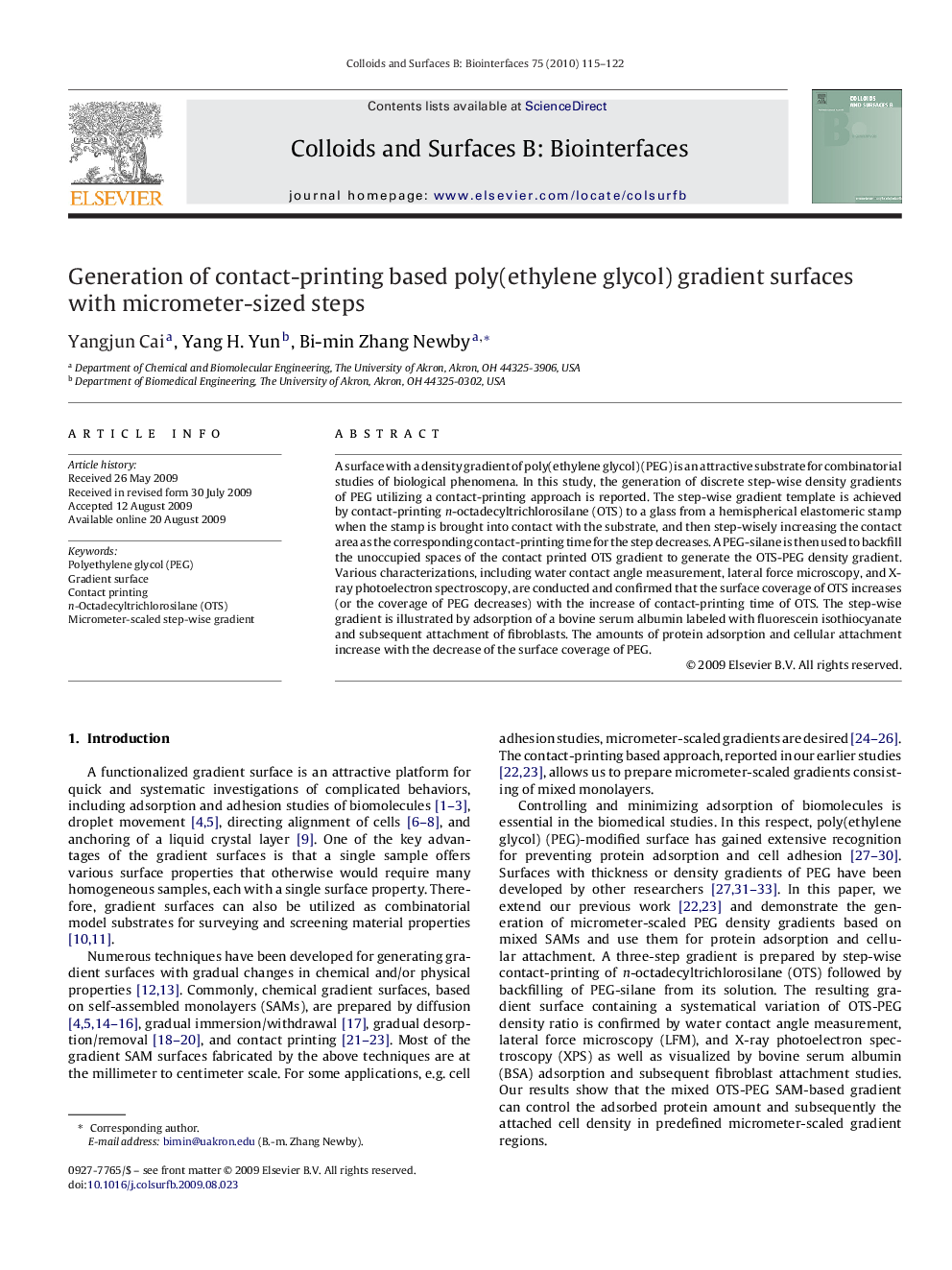| Article ID | Journal | Published Year | Pages | File Type |
|---|---|---|---|---|
| 601947 | Colloids and Surfaces B: Biointerfaces | 2010 | 8 Pages |
Abstract
A surface with a density gradient of poly(ethylene glycol) (PEG) is an attractive substrate for combinatorial studies of biological phenomena. In this study, the generation of discrete step-wise density gradients of PEG utilizing a contact-printing approach is reported. The step-wise gradient template is achieved by contact-printing n-octadecyltrichlorosilane (OTS) to a glass from a hemispherical elastomeric stamp when the stamp is brought into contact with the substrate, and then step-wisely increasing the contact area as the corresponding contact-printing time for the step decreases. A PEG-silane is then used to backfill the unoccupied spaces of the contact printed OTS gradient to generate the OTS-PEG density gradient. Various characterizations, including water contact angle measurement, lateral force microscopy, and X-ray photoelectron spectroscopy, are conducted and confirmed that the surface coverage of OTS increases (or the coverage of PEG decreases) with the increase of contact-printing time of OTS. The step-wise gradient is illustrated by adsorption of a bovine serum albumin labeled with fluorescein isothiocyanate and subsequent attachment of fibroblasts. The amounts of protein adsorption and cellular attachment increase with the decrease of the surface coverage of PEG.
Related Topics
Physical Sciences and Engineering
Chemical Engineering
Colloid and Surface Chemistry
Authors
Yangjun Cai, Yang H. Yun, Bi-min Zhang Newby,
